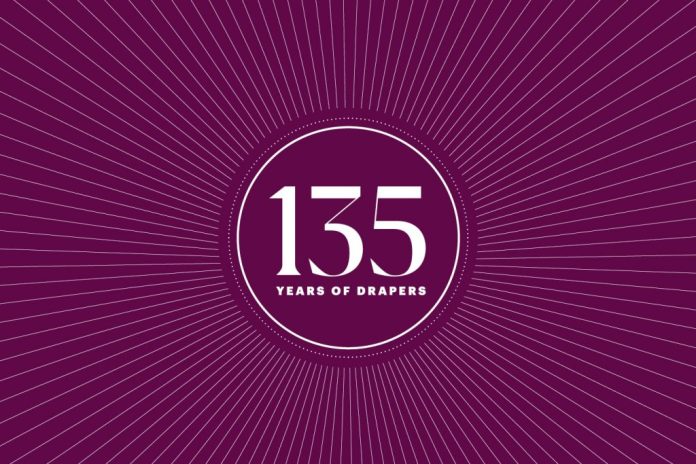The Drapers’ Record presented some stunning editorial covers, like this one from 18 March 1893. The bravura display of Victorian design, typography and printing shows the location of the publication’s office alongside St Paul’s Cathedral.

Five advertisers vie for the readers’ attention on this colorful cover from 15 July 1911. This is a good representation of the range of suppliers that used the magazine to promote themselves to readers not just in the UK, but across the world.

Carlisle-based manufacturer Ferguson Brothers, seen here on the issue of September 19, 1925, was a regular advertiser between the wars, always displaying its fabrics in superb colorful illustrations. The firm operated from 1824 to 1991.

Before World War II, the use of photography began to increase, allowing covers such as this example from advertiser Judy Frocks on 6 February 1937.

In the post-war period, Drapers’ Record’s advertising department did very well from the huge boom in synthetic fibers and fabrics. Large chemical companies such as Du Pont had plentiful promotional budgets to spend. For this edition from 4 September 1965, Du Pont took the cover and a five-page promotion inside for Orlon, its acrylic fibre. his issue was the first to be styled Drapers’ Record rather than The Drapers’ Record.

The covers of drapers have reflected changing times. Although the use of black models by advertisers was still uncommon, this issue, from 29 January 1972, was a welcome recognition of the multicultural society the UK had become. The client was Nottinghamshire-based manufacturer Martin Emprex.

By early 1976, after almost 90 years, the possessive apostrophe on Drapers’ was dropped and the magazine became Drapers Record. The world did not end. This cover from 7 February 1976 reminds us that hand-knitting wool and haberdashery, as well as home textiles, played an important part in the magazine’s mix until about 30 years ago.

For many years, Draper’s Record had been criticized by some for having an old-fashioned name. No one is a draper these days, they argued. In a radical revamp starting with this issue of 24 September 1988 the name was changed to DR The Fashion Business – a clumsy choice that never caught on. About 18 months later, it was changed back. Draper’s Record might have been old fashioned, but it was universally known.

In 1993 Emap bought a clutch of leading trade magazines, including Drapers Record and its brother publication, Menswear, from the Thomson Corporation. Soon after, the practice of selling the front covers to advertisers was dropped. In October 2002 Drapers Record and Menswear were merged to create the modern Drapers, which has enjoyed the freedom to vary the cover treatment. Here, from 30 November 2013, we featured Peter Ruis of Jigsaw, the subject of that week’s Draper’s Interview.

There has been as much change in publishing since 1887 as there has been in fashion, and Drapers has developed accordingly. Although online is our main route to our readers today, the Drapers title also thrives in a monthly magazine for which the covers are as inspiring and varied as the contents. This was the first monthly edition, from July 2020.
Text and archive research by Eric Musgrave.

